Disclosure: This article contains affiliate links. We may earn a commission from purchases at no extra cost to you, which helps our travel content.
The mathematical symmetry of Kathmandu's temples first caught my eye six years ago when I ventured to Nepal seeking respite from decades in physics laboratories. What I discovered was far more profound—a valley where sacred geometry and spiritual devotion have coexisted for millennia, creating spaces that resonate with both scientific precision and mystical energy. As someone who has spent a lifetime studying the fundamental forces that bind our universe, I found myself equally bound to this ancient valley, returning repeatedly to unravel its cultural tapestry. This autumn marks my fourth visit to Kathmandu, and I'm eager to share how couples can experience this remarkable destination without breaking the bank. The valley's ancient temples aren't merely architectural marvels—they're portals to understanding how humans across centuries have interpreted the cosmos, much as we physicists attempt through equations and experiments.
Boudhanath Stupa: Cosmic Geometry in Sacred Form
Standing before the massive white dome of Boudhanath, I'm always struck by its perfect proportions—a physical manifestation of the mandala, representing the Buddhist cosmos in architectural form. The stupa's design follows precise mathematical ratios that would impress any physicist, with the central spire functioning as an axis mundi connecting earth to sky.
My ritual here never changes: I join the clockwise flow of pilgrims circumambulating the stupa, my footsteps joining thousands of others in a living demonstration of circular motion. The gentle rotation of prayer wheels creates a soothing rhythm, not unlike the comforting predictability of planetary orbits.
For couples, Boudhanath offers a particularly intimate experience at dawn or dusk. During my last visit, I watched a young Australian couple sitting quietly on a rooftop café, hands intertwined, as the setting sun gilded the giant Buddha eyes that gaze in four directions from the stupa's tower. Time seems to operate differently here—the bustle of Kathmandu fades, leaving space for connection.
I recommend bringing a travel journal to record your impressions. Something about this place inspires reflection, and I've filled dozens of pages with observations that later informed my scientific thinking in unexpected ways.

💡 Pro Tips
- Visit at dawn (around 5:30-6:30am) to witness monks beginning their daily rituals
- Many rooftop cafés offer spectacular views; Café du Temple and Buddha Café are affordable options
- Purchase a combined ticket if you plan to visit multiple Buddhist sites in the valley
Pashupatinath: Where Life and Death Converge
The UNESCO World Heritage site of Pashupatinath presents a stark contrast to Boudhanath's serene geometry. Here, along the sacred Bagmati River, Hindu cremation rituals occur in the open air—a profound reminder of the thermodynamic truth that energy merely changes form rather than disappearing.
On my second visit to Nepal, I found myself unexpectedly moved by the matter-of-fact approach to mortality here. As a scientist accustomed to clinical settings, watching families bid farewell to loved ones with ritual and reverence offered a different perspective on the transition we all eventually face.
For couples exploring Pashupatinath, this can be an opportunity for meaningful conversations about life's impermanence—something I've noticed strengthens bonds rather than dampens spirits. The temple complex itself is architecturally stunning, with pagoda-style temples featuring intricate woodcarvings that have withstood centuries of monsoons and earthquakes.
I recommend visiting in the morning when the light is soft and the crowds are thinner. Engage one of the many sadhus (holy men) for a blessing—though be prepared to offer a small donation. While photography is permitted in most areas, exercise discretion and respect around cremation ghats.
A good travel guidebook is invaluable here, as understanding the rituals enhances appreciation. I've found that knowing the symbolism behind practices—like why the sacred bull Nandi faces Shiva's temple—adds layers of meaning to what might otherwise seem foreign or inaccessible.
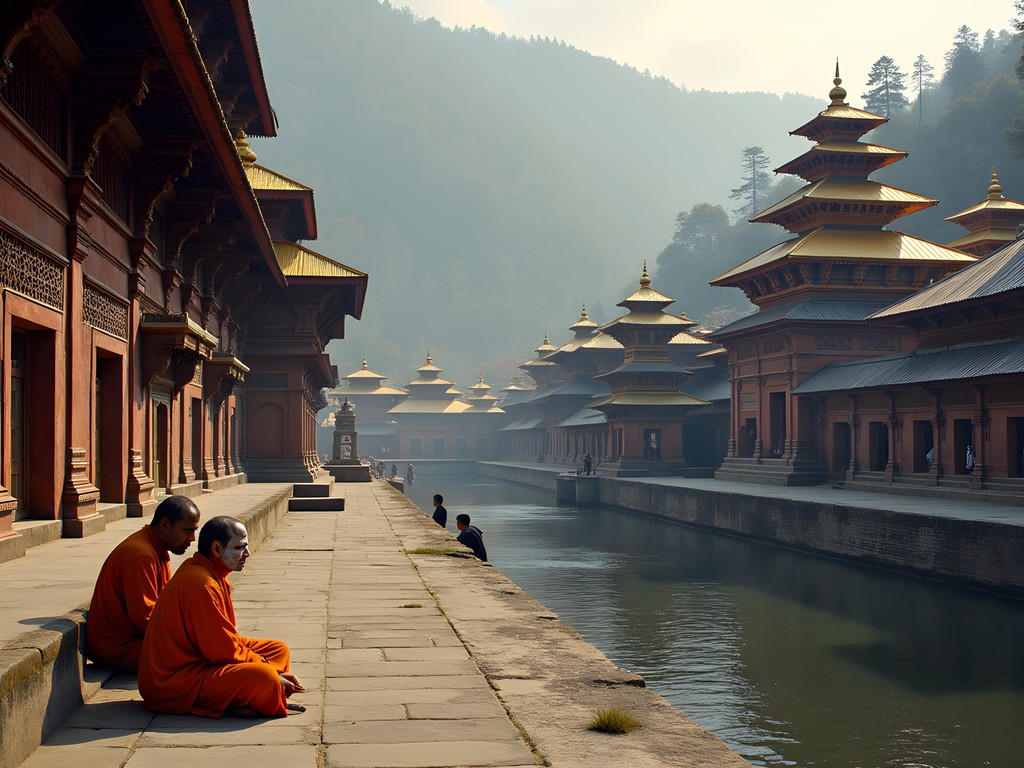
💡 Pro Tips
- Hire a local guide for deeper insights into Hindu customs and symbolism
- Women may not enter certain inner sanctums during menstruation, respecting local beliefs
- Dress modestly with shoulders and knees covered; scarves are available for rent if needed
Swayambhunath: Monkeys, Mantras, and Mountaintop Views
Perched atop a hill overlooking the sprawling Kathmandu Valley, Swayambhunath (affectionately known as the Monkey Temple) offers both spiritual significance and spectacular panoramic views. The 365 steps leading to the main stupa—one for each day of the year—provide an excellent opportunity to contemplate the relationship between sacred numbers and astronomical cycles.
During my visit last autumn, I spent an entire afternoon here with my binoculars, alternating between observing the resident rhesus macaques' social behaviors and scanning the distant Himalayan peaks emerging from the clouds. As a physicist, I'm fascinated by how ancient cultures positioned their sacred sites to align with celestial bodies—something clearly evident in Swayambhunath's orientation.
For couples on a budget, this site offers exceptional value. The entrance fee is modest (about 200 NPR for foreigners), and you can easily spend half a day exploring the complex of shrines, prayer wheels, and small museums. Pack a picnic lunch and find a quiet corner away from the monkeys to enjoy one of the best views in the valley.
The most magical time to visit is during the evening aarti (prayer ceremony) when butter lamps illuminate the stupa and monks chant ancient mantras. The acoustics create fascinating resonance patterns that seem to vibrate at the same frequency as something deep within the human chest—a phenomenon I've attempted to measure but ultimately decided is better experienced than quantified.
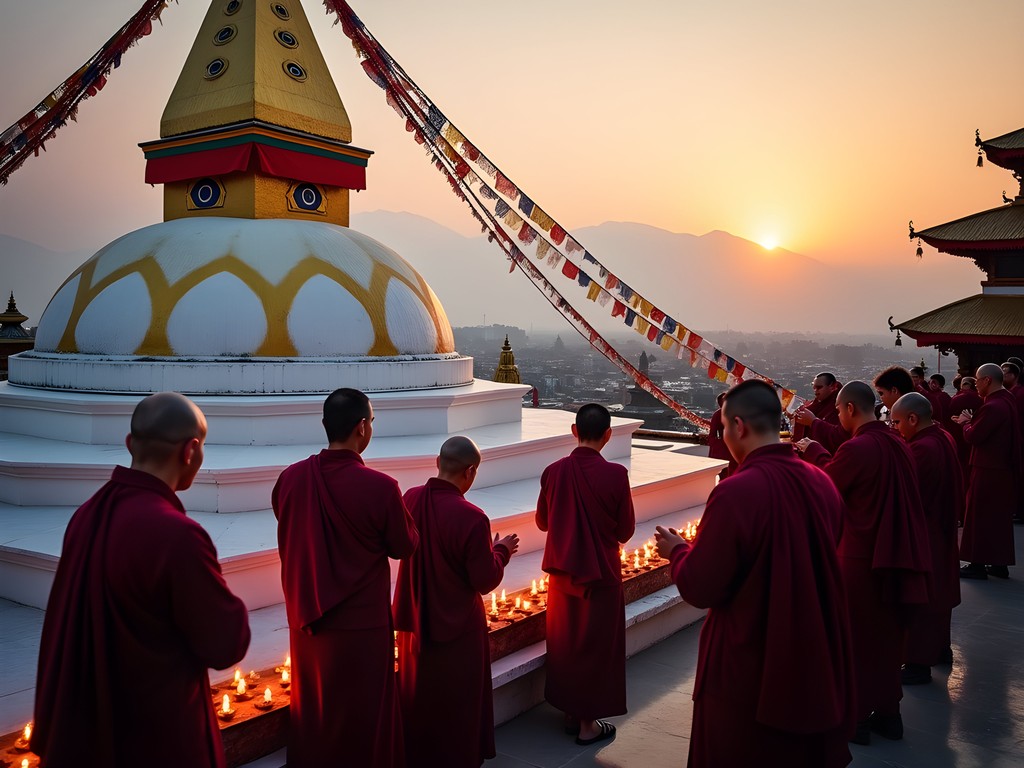
💡 Pro Tips
- Watch your belongings around the monkeys—they're skilled opportunists
- Bring a water bottle and snacks as prices are higher at the summit
- Time your visit for late afternoon to catch both daytime views and evening ceremonies
Changu Narayan: Ancient Engineering in Nepal's Oldest Temple
For those willing to venture slightly outside Kathmandu proper, Changu Narayan offers a profound glimpse into ancient Nepalese craftsmanship. Dating back to the 4th century, this temple dedicated to Vishnu is the oldest in Nepal and showcases remarkable engineering that has withstood numerous earthquakes.
As someone who has studied material physics, I'm continually amazed by the temple's structural integrity. The intricate joinery techniques used in its wooden elements distribute seismic forces in ways that modern engineers still study. During my second visit to Nepal, I spent hours examining the carved struts supporting the roof—each telling stories from Hindu mythology while simultaneously serving crucial structural functions.
Changu Narayan receives far fewer visitors than the valley's other major temples, making it ideal for couples seeking a more intimate experience. The journey there—about 22 km from central Kathmandu—becomes part of the adventure, winding through terraced fields and traditional villages.
The temple complex houses Nepal's oldest stone inscription, dating to 464 CE, and some of the finest examples of Nepalese stone carving. I recommend bringing a headlamp to better examine the intricate details in the often dimly lit interior spaces. When I showed my light across the carved surfaces at different angles, previously invisible details emerged like cosmic secrets revealing themselves to the patient observer.
A local guide is particularly valuable here, as the iconography and historical context are rich but not always obvious to visitors. My guide, Ramesh, pointed out mathematical patterns in the carvings that I would have otherwise missed—patterns that echoed fractal geometry centuries before Western mathematics formalized these concepts.
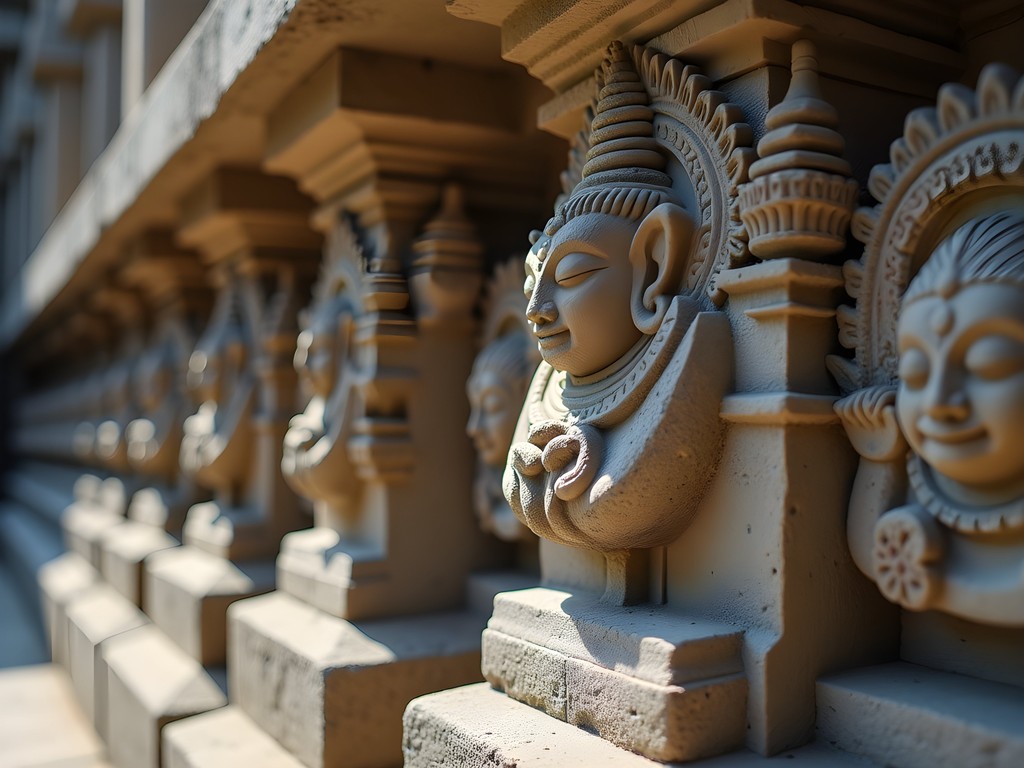
💡 Pro Tips
- Combine your visit with nearby Bhaktapur for a full day of cultural exploration
- Bring small denominations of rupees as there are limited ATMs in the area
- Consider hiring a taxi for the day rather than relying on public transport, which can be sporadic
Connecting with Local Traditions: Beyond Sightseeing
While Kathmandu's temples provide the valley's architectural framework, it's the living traditions that give these spaces meaning. After multiple visits to Nepal, I've found that the most profound experiences come from participating in daily rituals alongside local devotees.
One autumn morning during my third visit, I joined a Newar family for their daily puja (worship) at a small neighborhood shrine in Patan. What struck me was how seamlessly spiritual practice integrated with daily life—much like how fundamental forces in physics operate continuously without our conscious awareness. The grandmother showed me how to prepare a small offering plate with flowers, rice, and vermilion powder, explaining each element's significance with the patience of a seasoned teacher.
For couples visiting Kathmandu, I recommend seeking out these participatory experiences rather than merely observing from a distance. Many guesthouses and hotels can connect you with local families or community events where visitors are welcome.
The Nepali calendar is filled with festivals, many concentrated in autumn when weather conditions are ideal. During Tihar (the Festival of Lights), homes and temples throughout the valley are illuminated with oil lamps and candles, creating a spectacle that rivals any celestial phenomenon I've studied. The patterns of light across the valley, when viewed from a height, reveal the human settlements like a reflection of the night sky—constellations of community bound by shared tradition.
I always pack my travel scarf which not only provides appropriate coverage for temple visits but also has a hidden pocket for valuables—practical for moving through crowded festival celebrations. The versatility reminds me of the dual-nature of particles in quantum mechanics—simultaneously functional and decorative depending on the context of observation.
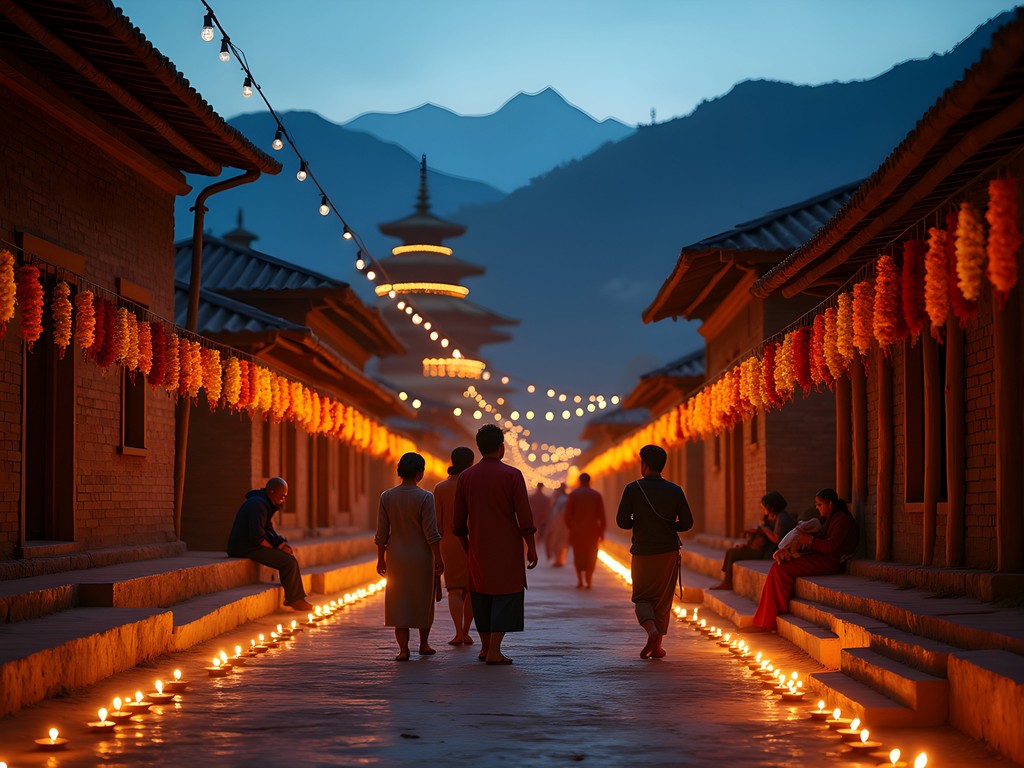
💡 Pro Tips
- Learn basic Nepali greetings—a little linguistic effort goes a long way in fostering connections
- Ask permission before photographing people engaged in worship or rituals
- Remove shoes before entering temples and homes as a sign of respect
Final Thoughts
As I reflect on my journeys through Kathmandu Valley's sacred spaces, I'm reminded that temples—like equations—are human attempts to frame the infinite. These ancient structures, with their precise geometries and symbolic elements, speak a language that bridges my scientific training and spiritual curiosity. For couples exploring Nepal on a budget, these temples offer more than architectural wonder; they provide spaces for connection—with each other, with history, and with the profound questions that unite humanity across time. Whether you're climbing the steps of Swayambhunath at dawn or watching cremation fires at dusk in Pashupatinath, Kathmandu Valley offers transformative experiences that transcend typical tourism. As you plan your journey, remember that the true value lies not in checking sites off a list but in allowing these sacred spaces to reveal their rhythms and wisdom at their own pace—much like the universe itself.
✨ Key Takeaways
- Visit major temples during early morning or evening hours for fewer crowds and better light
- Budget travelers can experience Kathmandu's sacred sites meaningfully without expensive tours or guides
- Autumn combines ideal weather with major festivals for an enhanced cultural experience
- The mathematical and astronomical principles embodied in temple architecture offer special interest for scientifically-minded travelers
📋 Practical Information
Best Time to Visit
October-November (post-monsoon autumn)
Budget Estimate
$30-50 USD per day per person (including accommodation, meals, and entrance fees)
Recommended Duration
5-7 days
Difficulty Level
Easy




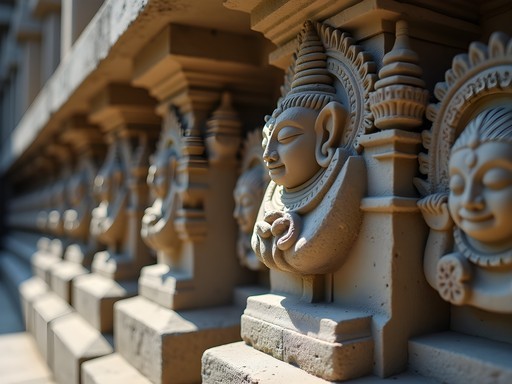



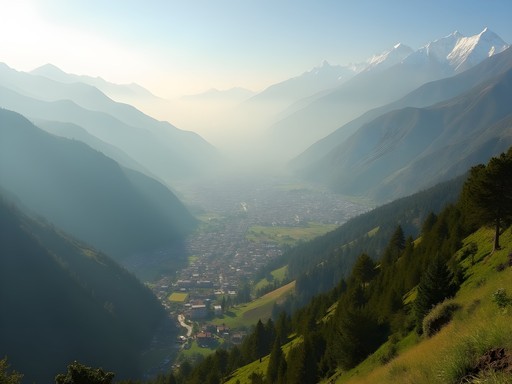







Comments
explorepro
What's the best way to get between these temples? Is there public transportation or should I hire a driver for the day?
Frank Garcia
Local buses go to most sites but they're crowded and confusing if you don't speak Nepali. I used a combination of taxis (negotiate hard!) and walking. For Changu Narayan, which is further out, I hired a driver for half a day (about $25). If you're short on time, a driver for a full day is worth it - they often double as guides and know the back routes to avoid Kathmandu's legendary traffic.
Casey Andersson
Brittany, your post brought back so many memories! I spent a week at a monastery near Boudhanath last year, and the morning rituals were life-changing. For anyone planning a visit, I highly recommend staying in the Boudha neighborhood rather than central Thamel. It's much more peaceful, and you can experience the stupa at different times of day as locals circumambulate. The best moments were at dawn and dusk when the light changes dramatically. Changu Narayan doesn't get enough attention - it was nearly empty when I visited, and the wood carvings are extraordinary. I used my Nepal guidebook which had an excellent walking tour of the lesser-known temples around Patan that were equally impressive.
happychamp
That shot of Boudhanath Stupa with the prayer flags is absolutely stunning! Did you use a drone?
travelchamp
Going to Nepal next month! How physically demanding is the climb to Swayambhunath? Those stairs look intense!
Casey Andersson
The stairs are definitely a workout! About 365 steps if I remember correctly. Take it slow and bring water. The monkeys are entertaining but watch your belongings. The view at the top is absolutely worth it though - you can see the entire Kathmandu Valley on a clear day. I'd recommend going early morning to avoid both crowds and midday heat.
travelchamp
Thanks! Early morning it is. Did you have any issues with altitude?
Casey Andersson
Kathmandu is only about 1,400m elevation, so altitude isn't really an issue there. You'll just be dealing with regular stair-climbing fatigue! Save your altitude concerns for if you're trekking higher into the mountains.
Frank Garcia
Brittany's comparison between physics and temple architecture is fascinating. I spent three weeks exploring Kathmandu Valley last year and was equally struck by the geometric precision, especially at Boudhanath. The mandala design isn't just aesthetically pleasing - it's a cosmic map. What really enhanced my experience was hiring a local guide who explained the symbolism behind each architectural element. The morning ritual at Pashupatinath was confronting but profound - definitely arrive before 7am if you want to witness the cremation ceremonies without crowds.
explorepro
Did you need special permission to enter any of these temples? I've heard some are restricted to Hindus only.
Frank Garcia
Good question! At Pashupatinath, non-Hindus can't enter the main temple but can observe from across the river. Boudhanath and Swayambhunath are Buddhist sites open to everyone. Changu Narayan had no restrictions when I visited. Just dress respectfully and you'll be fine!
nomadone
Wow, what a beautiful way to connect science and spirituality! I never thought about temples having mathematical symmetry before.
globelover
That shot of Changu Narayan at sunrise is absolutely stunning! How early did you have to get there to catch that light?
Brittany Hassan
I was there by 5:30am! Definitely worth the early wake-up call. The caretaker was just opening up and I had the place almost entirely to myself for about an hour.
globelover
Adding this to my bucket list! Did you hire a driver to get there that early?
Brittany Hassan
Yes, I arranged a driver the night before through my guesthouse. Cost about 1500 NPR round trip with waiting time. Well worth it!
Casey Andersson
Brittany, your connection between physics and temple architecture is fascinating! During my stay at Dwarika's Hotel last month (a stunning property built like a traditional Newari palace), I had a similar epiphany about Swayambhunath. The way the stupa's eyes follow you from every angle feels like a lesson in perspective and dimension. Did you notice how the monkeys seem to have their own social hierarchy there? I spent hours just watching their interactions while sketching the temple. Your post captures that special energy perfectly!
Brittany Hassan
Thank you Casey! Yes, those monkeys are fascinating - I actually spoke with a researcher who's been studying their social structures for years. And Dwarika's is incredible - such attention to preserving traditional craftsmanship.
summerbackpacker
Your description of Pashupatinath took me right back! I visited last year and was completely unprepared for how emotional it would be watching the cremation ceremonies. Our guide explained everything so respectfully. For anyone planning to visit, I recommend going early morning when the light hits the temples just right. Also found that having a pocket phrasebook really helped connect with locals around the temples.
tripclimber
Amazing post! I'm planning to visit in September - is that still monsoon season? Wondering if the temples will be too crowded or if it's actually a good time to go?
Brittany Hassan
September is actually transitional - the heavy monsoon rains typically start winding down, so you might catch some perfect days! The light after rainfall makes for incredible photos at Boudhanath.
tripclimber
That's great to hear! Definitely adding Boudhanath to my must-see list. Thanks!
Venture X
Premium card with 2X miles, $300 travel credit, Priority Pass